I confess some superhero powers underwhelm me (really, Hawkeye, arrows?) or stretch credulity further than Hulk’s hyper-elastic jeans. However, one I can appreciate is Mystique, the shape-shifting mutant who constantly alters her appearance to stay one step ahead.
If factors were superheroes, I’d argue the S&P 500® Momentum Index (“Momentum”) and Mystique share commonalities, both misunderstood and powerful through constantly morphing into something new. As a reminder, the momentum factor refers to the tendency of outperforming stocks to continue outperforming in the near term.
Thirty years after the publication of perhaps the most cited paper on momentum, researchers continue exploring why it works. To some, the momentum premium is simply compensation for risk, while others attribute it to human behavioral biases such as loss-aversion or self-attribution. In other words, markets are made up of people who don’t always act rationally, and many don’t understand momentum. Let’s bust three common misperceptions about momentum using data from the S&P 500 Momentum Index (Mystique-blue in the charts below, naturally).
Myth 1: Momentum Is Just Risky or High Beta Stocks
While the S&P 500 High Beta Index (“High Beta”) selects the 100 highest beta stocks from the S&P 500, Momentum selects constituents with top-quintile risk-adjusted price return momentum scores. Resulting differences between High Beta and Momentum indices have historically led to only a 2% overlap and a -0.54 relative return three-year correlation. Performance also underscores the uniqueness of each factor. Just during January 2023, the performance of High Beta and Momentum differed by 17%—their fourth-highest spread since 2010.
Looking over a longer time horizon, data show an often inverse relationship between excess returns for High Beta and Momentum (see Exhibit 1).
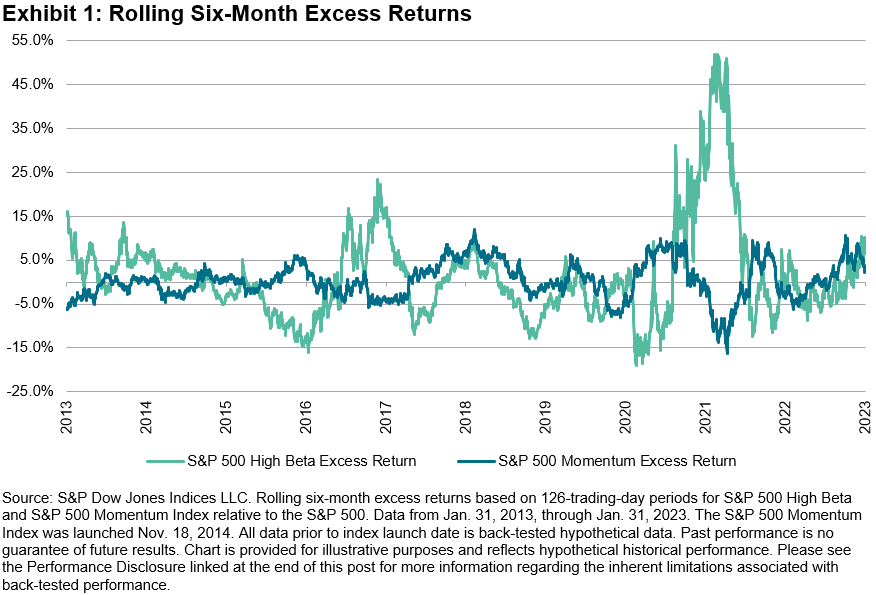
Longer-term performance also highlights the differences (see Exhibit 2).
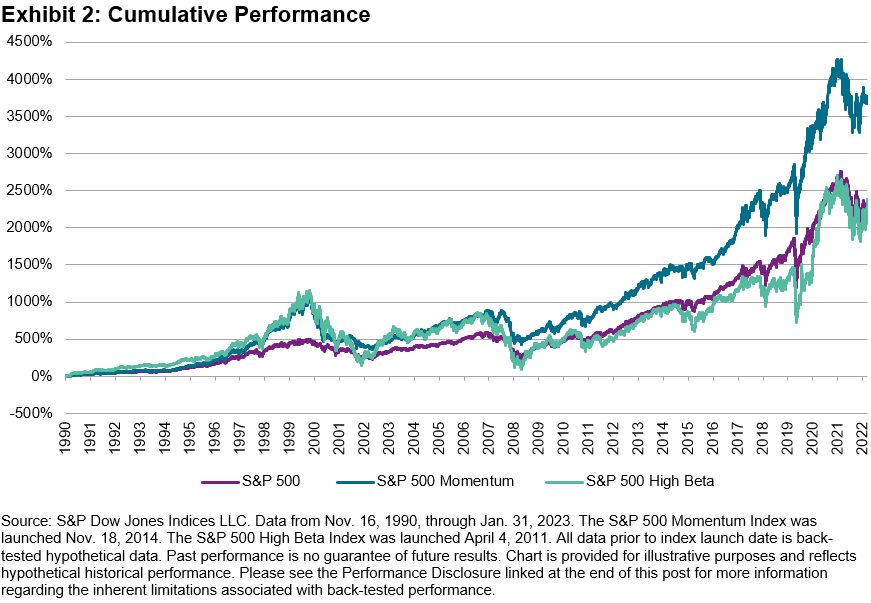
A keen eye finds that Momentum outperformed on a relative basis for the 2022 calendar year, perhaps busting the second part of Myth #1 that the factor is inherently higher risk. In reality, the S&P 500 Momentum Index selects stocks that rank highly on risk-adjusted performance, leading to an index with annualized risk that has historically been similar to or below that of the S&P 500 (see Exhibit 3).
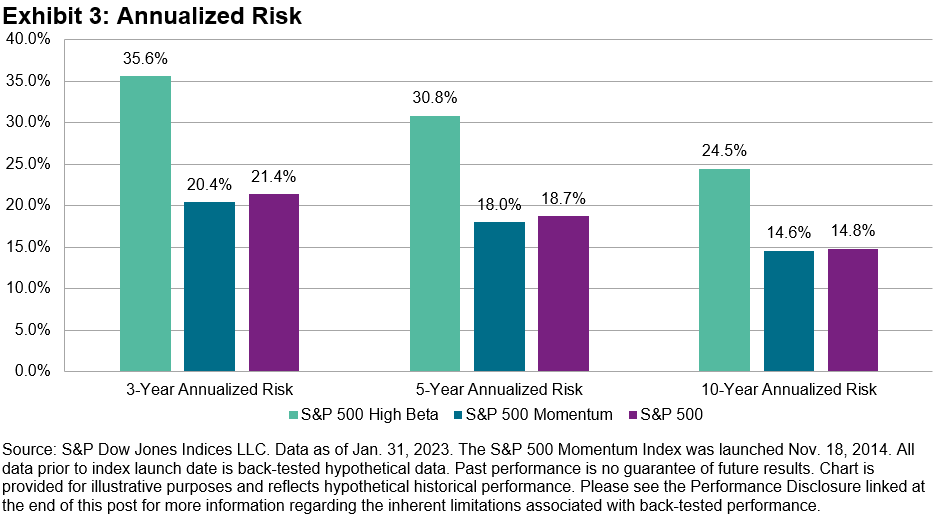
If momentum indices can actually be constructed with similar or less volatility than the broader market, then we can begin addressing the second myth.
Myth 2: Momentum Only Works in Bull Markets
When the S&P 500 declined 18.1% in 2022, the S&P 500 Momentum Index outperformed, falling 10.5%. Curious about Momentum’s resilience, we examined its average excess performance during one-month periods when the S&P 500 was rising or falling. As seen in Exhibit 4, Momentum outperformed in both on average.
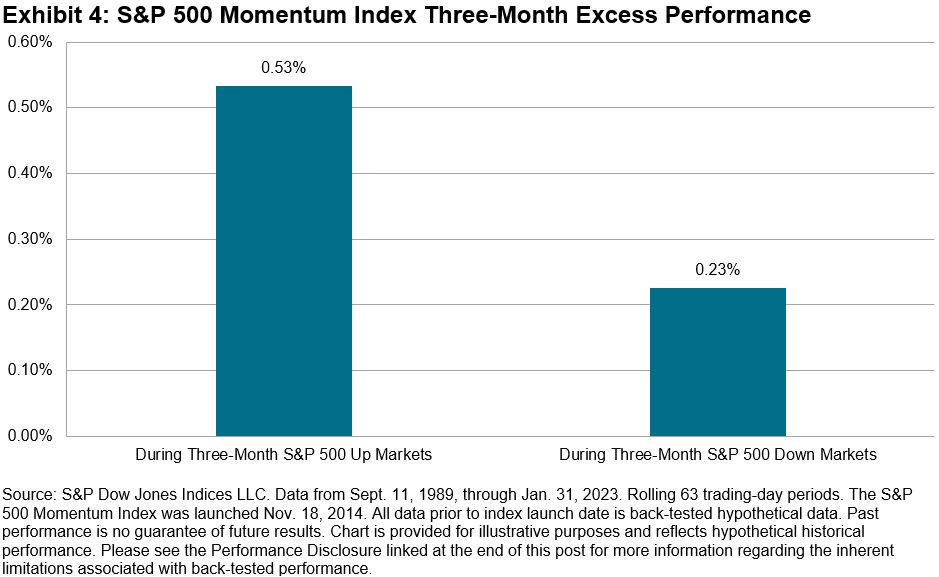
Clearly for momentum to work in different conditions, it must transform as the factor itself moves across different parts of the market. The most market-based among factors, Momentum has a historically high turnover, which leads to our final myth.
Myth 3: The Momentum Factor Can’t Be Indexed.
Put differently, can indices continue to harness a factor like momentum through time? Affirmation comes from the fact that many “passive” indices (such as factors) are quite dynamic in how they rebalance.
Momentum “shapeshifts,” dramatically changing security and sector weights at rebalances to maintain high exposure to the targeted factor (see Exhibit 5).
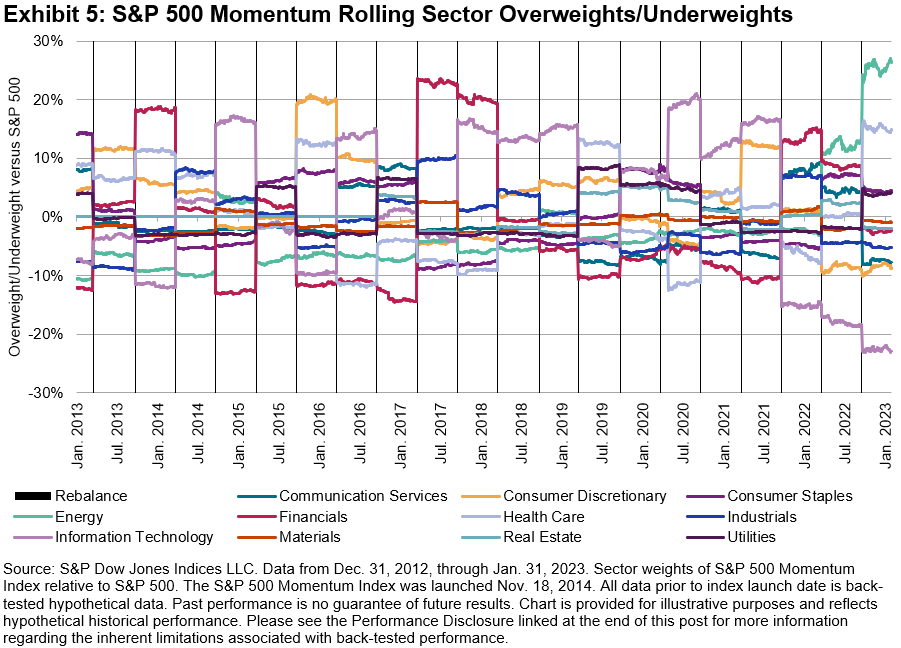
Like Mystique taking on different forms, the S&P 500 Momentum Index is always changing by design, evolving in response to market conditions and maintaining a high exposure to the factor along the way.
The posts on this blog are opinions, not advice. Please read our Disclaimers.



















